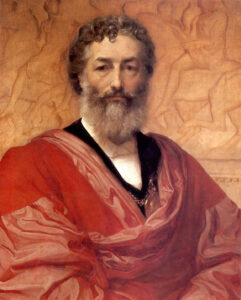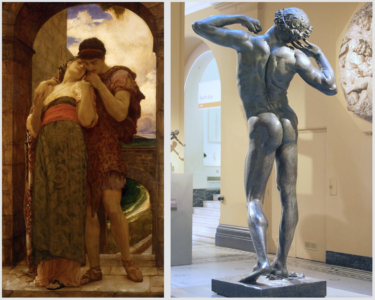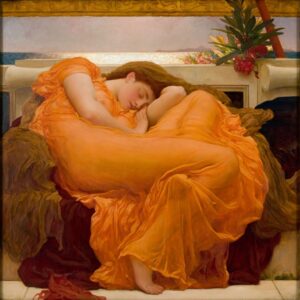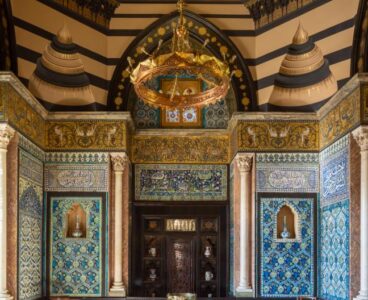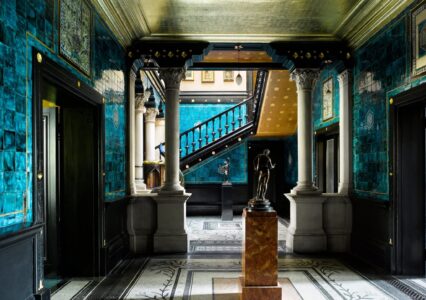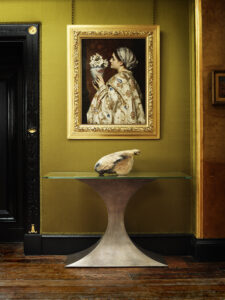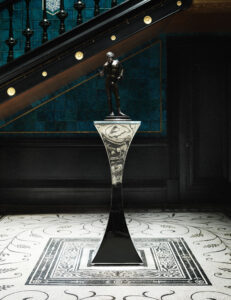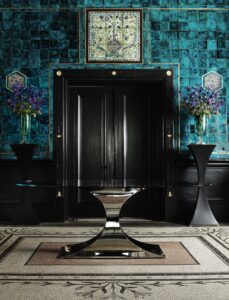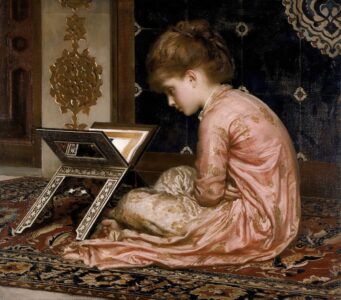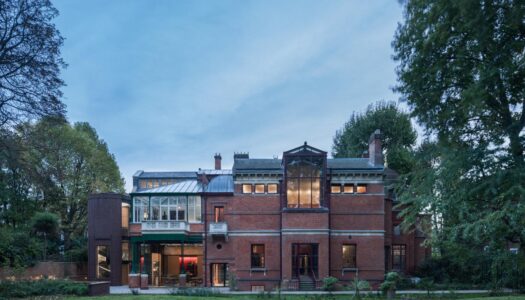At number 12 Holland Park Road you’ll find a great bricked house with a neat little dome. Within its walls are countless wonders of artistic, architectural, and cultural intrigue once belonging to the artist, Frederic, Lord Leighton. He was an eminent Victorian painter and sculptor with an unfettered ambition first to prove himself as an artist and later, to prove Britain as a source of excellence in the arts. His home in London’s Holland Park is a reflection of this blazing pursuit of artistic brilliance which burned brightly throughout his life.
Leighton was born into a family of physicians, who’d amassed their wealth under the service of the Russian tsars. By his birth in 1830 they were living in Yorkshire, though they later left England for the sake of his mother’s health when Leighton was 11 years old. They eventually settled in Frankfurt where he enrolled at the art school, Städelsches Institut and began working with a teacher who would play a formative role in his work, Edward von Steinle. The spark of creativity propelled Leighton to travel the world in pursuit of the inspiration and skill he would need to both satisfy his appetite as an artist and meet his family’s high standards for more traditional professional achievement. As he remarked, “My parents surrounded me with every facility to learn drawing, but strongly discountenanced the idea of my being an artist unless I could be eminent in art”. Leighton worked hard to that end, becoming very ‘eminent’, indeed – and quickly. He finished his first major painting in 1855, which was snapped up by none other than Queen Victoria. Not bad for a first shot.
Leighton’s work fell in line with much of the Holland Park Circle’s style, with elements feeding in from the Pre-Raphaelites. He painted in the academic style, focusing primarily on historical, biblical, and classical themes. Though there was no shortage of academic art in the Victorian era, Leighton’s stood out as a cut above the rest, appealing not just to British tastes but attracting interest from across the Continent. Leighton became the figurehead for British art, representing a burgeoning power in the global cultural sphere. This informal position was eventually made official when he was appointed President of the Royal Academy of Arts in 1878. He seemed to possess a natural talent for leadership, having been an enthusiastic volunteer soldier in the Army Reserve, ultimately rising to Commanding Officer of the Artists Rifles. To that end, James Whistler cleverly described Leighton as, “Colonel of the Royal Academy and the President of the Artists Rifles – aye, and he paints a little!”.
Leighton House is the archive of his passionate, peripatetic pursuit of artistic beauty. His sister recalled, “He built the house as it now stands for his own artistic delight. Every stone of it had been the object of his loving care. It was a joy to him until the moment when he lay down to die.”. The house contained the whole of the artist’s life, with spaces for living, working, and entertaining intertwined within its walls. It stood as an incarnation of the ideals to which a Victorian artist should aspire – as the ideal artist’s home.
He acquired the land in 1864 and began plans to create the perfect studio-house. He worked with his old friend, the architect George Aitchison. Aitchison specialised in more industrial projects so Leighton’s was actually the first house that he designed, and ultimately, one of only two that he worked on over the course of his life. His involvement in the ongoing Leighton project would span 30 years, as he carried on with design work on the interior as well as the furniture. Leighton never did officially finish his home, continually finessing and extending it almost constantly throughout his life.
Leighton travelled extensively through Turkey, Egypt, and Syria, picking up treasures along the way which would inform the decorative direction of his home. Visitors will admire evidence of his trip to Damascus in the Arab Hall, clad with 16th and 17th century Iznik tiles, for example. His friend, the explorer, Sir Richard Burton would bring Leighton figments of his own travels, further diversifying the cultural influences on the house.
The house was a product not just of cultural confluence but of artistic collaboration as well. Leighton and Aitchison would gather various creatively inclined friends to contribute to the project, infusing in it an eclectic and distinctly artful character. Some additions like the Silk Room were built specifically to showcase the work of other important artists of the time, including John Singer Sargent and John Everett Millais. The result was a testament and a totem to artistic excellence in its many forms.
Tom was struck by the rich tapestry of décor which flows throughout the classically constructed house. His Capricorn design is reflective of a similarly classical structure, drawing on age-old design principles like symmetry, balance, and form. As such, Leighton House presented the perfect atmosphere to photograph the collection in. The materially rich, colourful confines of the house complementarily contrast the sleek and simple lines of the Capricorn, producing a striking dynamic and breathing contemporary vibrancy into Leighton’s greatest creation.
Leighton’s dedication to the arts was recognised in 1896 when he was made the first painter to be given a peerage. He died the very next day, with this final seal of achievement immortalising a life lived in constant pursuit of beauty in its highest forms. At that point, his belongings were auctioned off, leaving the house as something of a shell. The following year Leighton’s neighbour, Emilie Barrington banded together with the newly formed Leighton House Committee to begin the painstaking process of repatriating his once grand collection of art, furniture, and personal effects. They gathered more than 700 sheets of drawings that Leighton drafted himself, slowly putting the pieces of the place back together with the help of the artist in absentia.
The process continues to this day, with works that saw the house closed for some time – until recently, that is. Leighton House has just reopened to the public, with improvements, new works of art, contemporary commissions, and even a new wing. The extension was designed in such a way that it takes pressure off the historic heart of the house, while expanding the offering to visitors.
Leighton had an immaculately well-constructed veneer, which very few, if any, ever managed to penetrate. He was something of an enigma who left little for us to go by in regards to his personal and inner life. Though, one can tell a lot about a person by the way they live when they’re in the privacy of their home. A visit to Leighton House offers clues into this mysterious character who contributed so very much to the arts in Britain. It does so in a truly beautiful way, collecting the carefully curated vestiges of a very distinct moment in art’s history.
Text by Annabel Colterjohn
